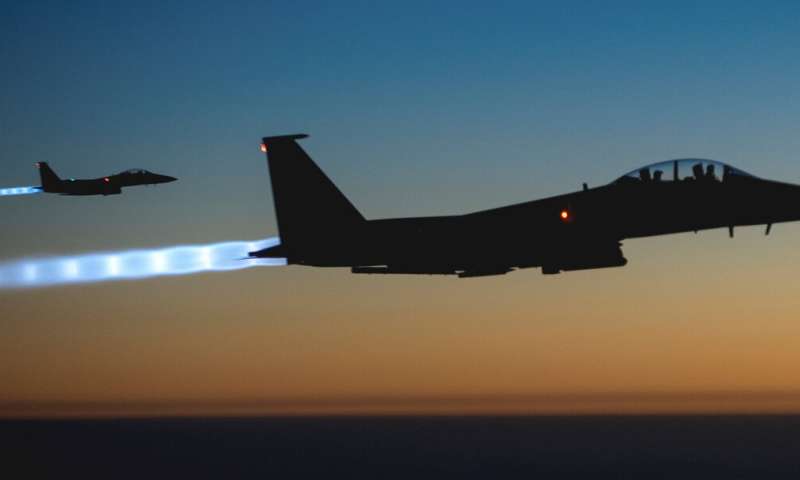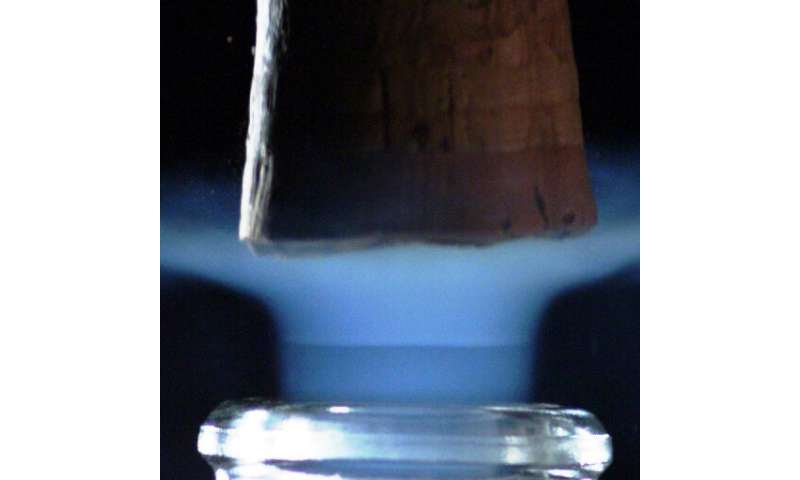September 23, 2019 report
Uncorking champagne creates under-expanded supersonic carbon dioxide freezing jets

A trio of researchers from the University of Reims Champagne-Ardenne and the University of Rennes has found that when a champagne bottle is uncorked, the CO2 and water that is released creates under-expanded supersonic CO2 freezing jets. In their paper published in the journal Science Advances, Gérard Liger-Belair, Daniel Cordier and Robert Georges describe their study of what happens when a bottle of champagne is uncorked, and what they found.
A popping noise occurs when a bottle of champagne is uncorked and the cork is shot across the room. There is also usually a small mist emission from the bottle afterward, and sometimes, the champagne itself comes pouring out. In this new effort, the researchers wanted to know more about the process. To find out, they uncorked a large number of bottles at different temperatures and recorded the action with high-speed cameras.
The researchers report that in the very first milliseconds after the cork is released, gas-phase CO2, along with a small amount of water, expands very rapidly into the air at the mouth of the bottle—this is what makes the familiar popping sound and also what pushes the cork away from the bottle. They also found that the sudden drop in pressure inside of the neck of the bottle forces the temperature to drop very quickly. This results in the sudden condensation of both the CO2 and water—creating the familiar mist that also comes pouring out of the bottle.
The researchers note that there were differences in uncorking behavior between bottles that had been chilled at different temperatures (20° or 30° C). Warmer bottles produced higher pressures and thus more dramatic actions during uncorking—and greater cooling in the neck. With the cooler bottles, the gases froze into crystals that were smaller than the wavelength of light—creating the familiar blue haze that is often seen when opening a bottle. The warmer bottles, because they were under higher pressure, created larger crystals, which created a gray-white mist. They found that the higher pressures also led to the formation of "Mach disks"—visible shockwaves—similar in many respects to those seen in the plumes of jetfighters.
-

Evidence for the formation of Mach disks in the supersonic exhausts of a McDonnell F-15E Strike Eagle. Credit: US Air Force/Senior Airman Matthew Bruch -

Mach disk during champagne cork popping at 20°C. Credit: Equipe Effervescence/ CNRS/ Université de Reims
More information: Gérard Liger-Belair et al. Under-expanded supersonic CO2 freezing jets during champagne cork popping, Science Advances (2019). DOI: 10.1126/sciadv.aav5528
Journal information: Science Advances
© 2019 Science X Network




















